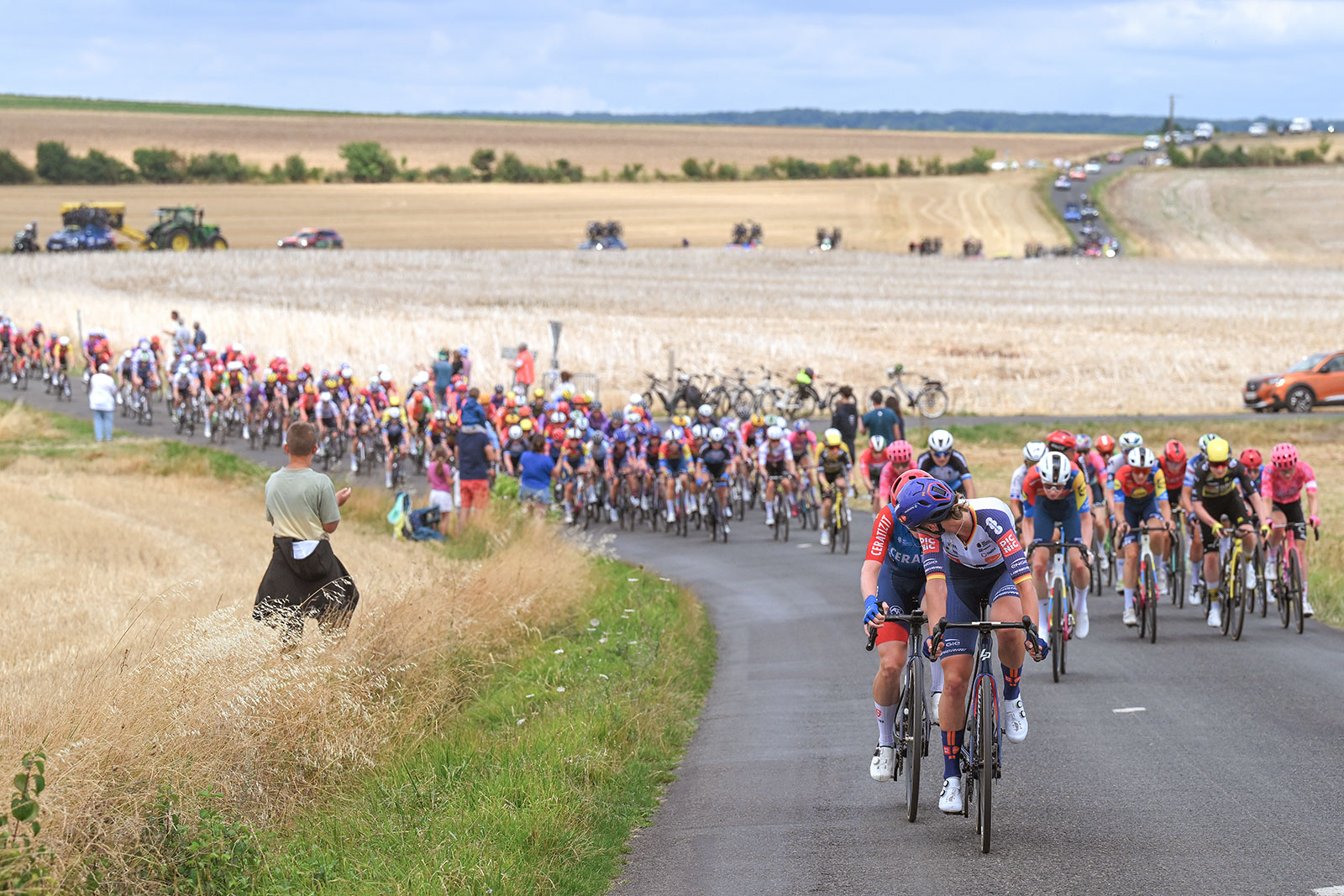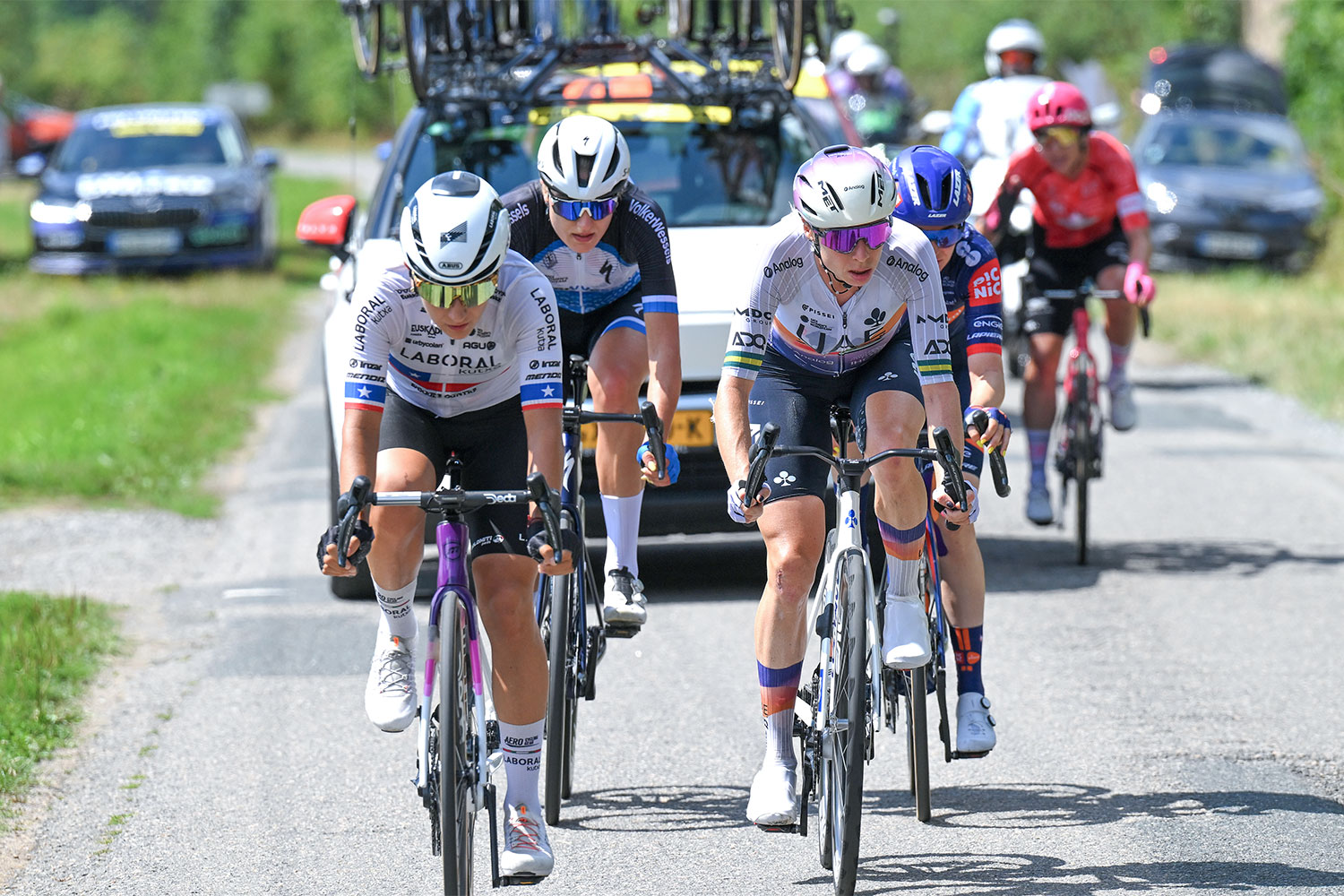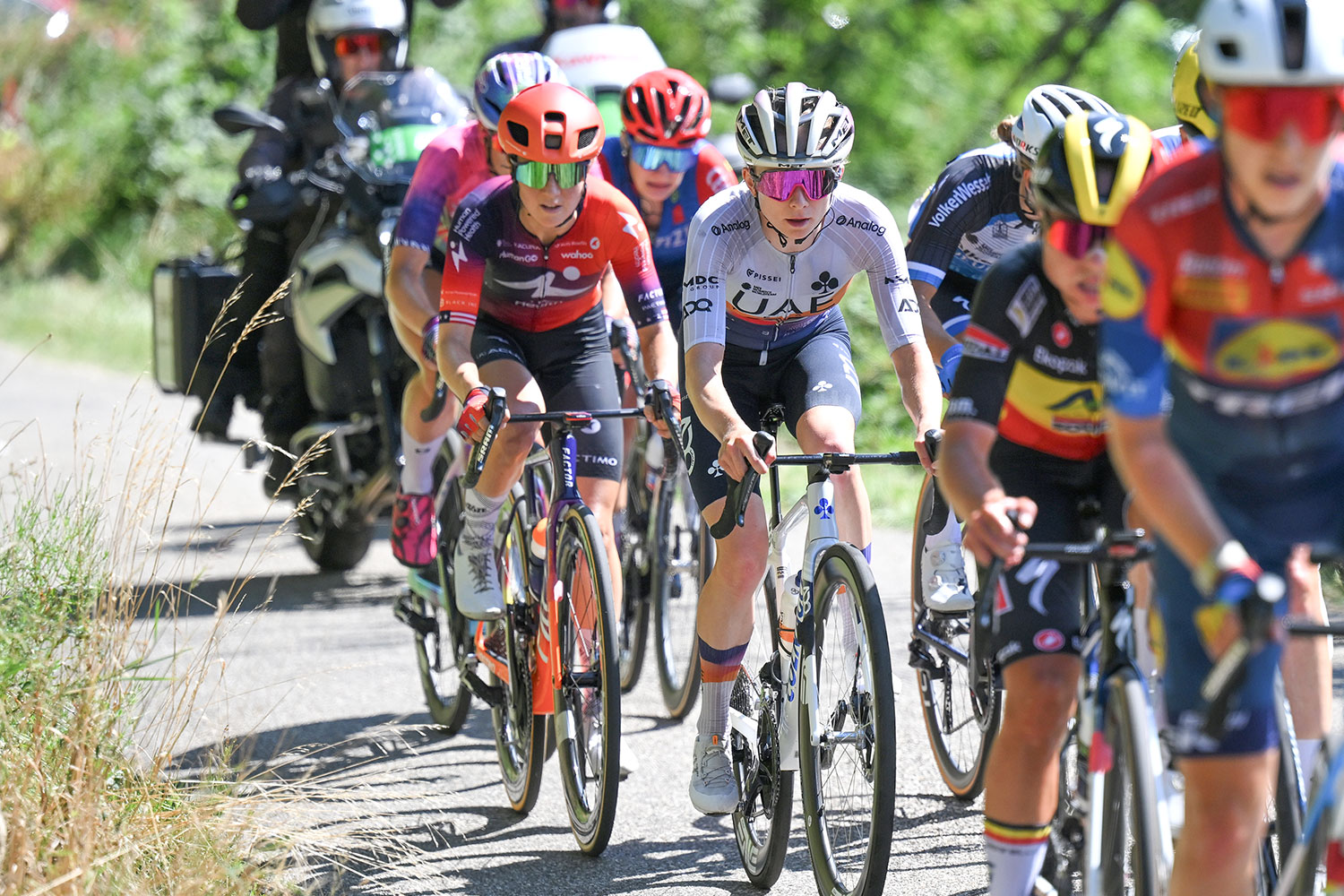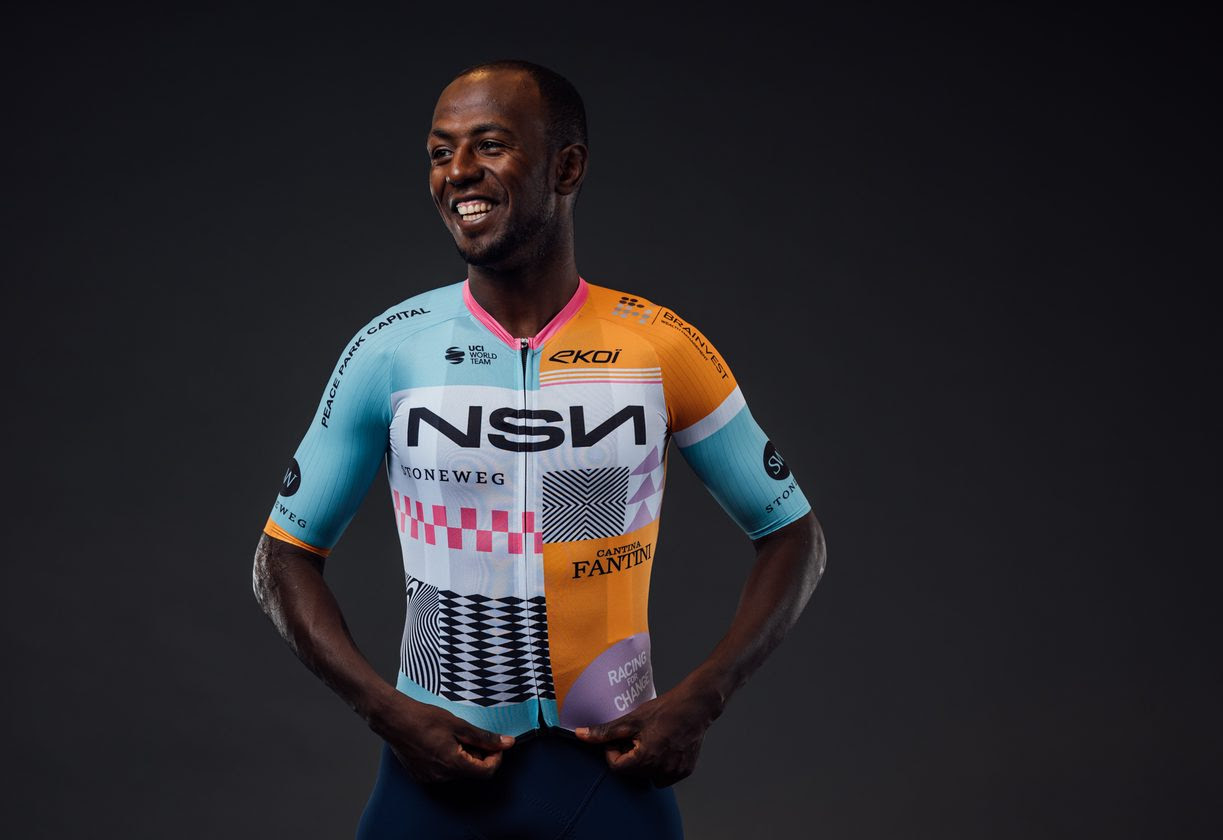'Everybody wants to be in the breakaway' – The Tour de France Femmes' most combative riders reveal the secrets of making the break in cycling's biggest race
Brodie Chapman, Maëva Squiban, Ruth Edwards, and Franziska Koch talk teamwork, reading the race and picking the right moments to attack

Much like time trialling and sprinting, making the breakaway during a race is an art, even more so at the biggest race in the world.
This year's Tour de France Femmes boasted breakthrough riders, history makers, and a long-awaited home winner, but the nine days of racing provided relatively few chances of glory for the breakaway artists of the peloton as sprint and GC teams sought to control stages for their leaders.
Breaks did enjoy some success at this year's Tour, though. The race's breakthrough rider, Maëva Squiban, led the way, scoring two stage victories – one with a 32km solo attack into Ambert on stage 6 and one from the day-long breakaway over the Col du Granier on stage 7.
In a tough race for breakaway riders, other notable results saw Ruth Edwards and Shirin van Anrooij survive from the break to take fourth and fifth behind Squiban on stage 6, while Niamh Fisher-Black and Yara Kastelijn scored top-five placings the next day.
Certain skills are needed to make the breakaway at the Tour, let alone to make them stick and cross the line first, especially in modern cycling. We spoke to the women who were busy all Tour long, going on the attack and making the breaks, to find out just how they manage it.
Squiban's UAE Team ADQ teammate Brodie Chapman was another rider who seemed to be constantly on the move before her withdrawal through illness ahead of the final stage. The Australian, a debutant on the Tour, won the combativity prize on stage 5 into Guerét.
Chapman told Cyclingnews that picking the right time to move is key to getting out in front of the peloton.
"Everybody wants to be in the break, but I think you kind of need to [try] until it's stretched out a bit so everyone's a bit tired," she said. "So, then you need to commit.
"If you want the break to stick, you really have to actually push that first, you know, couple of kilometres at least, because the peloton is always coming, someone is always chasing, so you really just can't look back."
That tried and tested method doesn't always work out, of course, with nothing guaranteed in a race, whether everybody is fighting for space, moves, and results.
"Sometimes that effort pays off by establishing the breakaway, and other times, it comes back together and someone else goes, and you miss out," Chapman continued.
"It's a gamble, but I definitely think if you look to kind of go off what's already in a breakaway attempt, then you have to commit."

Ruth Edwards, third in Chambéry for Human Powered Health, said that it's a matter of waiting to make the right move.
The US racer, riding her second Tour since making a return from retirement, advised that it's probably best to avoid the very first attack of the stage. It makes sense that it's harder to get clear of fresh legs, after all.
"Sometimes it works, and sometimes it doesn't," Edwards said. "I think maybe not going for the very first one works. All the time, things seem to go and come back, go and come back. But you just have to keep trying, you know – being persistent.
"I did everything I could the other day, and the place I got was the place I got. I'm really happy with that and proud of myself for putting myself in the position to go for it.
Picnic PostNL's Franziska Koch, who won the combativity prize on stages 1 and 4, agreed with Edwards' tactic.
"In general, mostly you try to go where the bunch starts to get tired, like the speed slows down again. Then you have to go because you need to build the first few metres of a gap," she said.
"Then people doubt like, 'Ah, should I go or not?' But if it's super easy to just slip in the slipstream, then everyone follows. You have to find the momentum of like, 'Ah, it's actually too hard to go.'"
The German champion, who made the break on stage 8 in addition to her earlier attacks, added that teamwork – using one-two attacks to get a gap with either rider – can also lead to success.
"I think sometimes you just have to try really hard and believe it. I tried already quite often, and then every time I had someone in the wheel and it didn't work out, but then the 10th time it might work," she said.
"I think it's also teamwork getting in a break because the goal is to get a break with everyone. It doesn't matter who, and we follow up on each other, so you don't waste that energy following every move. OK, one time I follow, another time, my teammate follows, so I think also having good teamwork is key to it."
The Tour's rate of attrition, with riders dropping out due to crashes and illness, left some teams unable to employ that tactic, however. Uno-X raced with three, and then two, riders during the last four days of the race after a few days of awful luck.

Down three after five days of racing, UAE had to make the best with the riders they had left, too, though it meant replicating Koch's tactic was harder to pull off. Chapman and Squiban made it into the break of the day on stage 6, however, with Squiban pulling off another win.
"You see other teams doing it, trying to get the right combination," Chapman said of the one-two tactic. "I think when I got in the break, it was like the fifth or sixth attack I'd followed, so that certainly took it out of me. I really went easy the next day because I was suffering thanks to those efforts.
"But also on the first day, if I'm up the road and my teammate is behind, she can stay in the peloton, and then they can attack later. So that's the tactic we went with, and it worked.
"But on stage 7, that was all Maëva. She did all the jobs – she was in the first breakaway, the middle and the end. So never say never with her."
Chapman, Squiban, and their teammates – GC hopeful Dominka Włodarczyk, who finished fourth overall after a strong closing weekend, and Irish sprinter Lara Gillespie – were given freedom to attack following the withdrawal through illness of team leader Elisa Longo Borghini.
For Squiban's first stage win, she said she was aiming to get a head start on the GC group before they went for it at the bonus seconds sprint atop the day's final climb.
"We are all more or less free. I just decided to attack here. I don't know why, I just had good legs. We say, 'Why not?' We have nothing to lose. We have to try," Squiban said afterwards.
"I could see from yesterday that the bonus sprint was important for the leaders, so I told myself that if I took a little head start before then, it could be interesting. In the end, I managed to continue, but it wasn't necessarily the plan."
Being the biggest race on the calendar, the Tour is also the fastest and the toughest, with Marianne Vos noting early on in the race that "everybody is fighting over every centimetre." The same applies to the battle for the breakaway, too.
Chapman said that teams and riders who might be allowed up the road in smaller races would find it much harder to get away at the Tour. It's the Tour de France Femmes, after all; everybody is fighting for every prize, every day.
"In other races, I think maybe there are some smaller French teams that would be allowed. Let's say the peloton might be OK with it, but here, there's a lot of there's only a few GC teams and a lot of people who want that opportunity, so it is a lot harder, for sure," she said.
"It can take 50km or more sometimes, and oftentimes, there are two parts, as we saw. There's an early break away and a late break away, but I think it makes the race super exciting."
Ultimately, however you make the break, just make it last for as long as you can, Chapman concluded.
"I know if you make it to the breakaway in the Tour de France Femmes, then unless you really have GC interests behind, I think it's in your own interest to stick it out in front and show the jersey and enjoy the race."
Subscribe to Cyclingnews for unlimited access to our Tour de France Femmes coverage. Don't miss any of the breaking news, reports, and analysis from one of the biggest women's stage races of the season. Find out more.

Dani Ostanek is Senior News Writer at Cyclingnews, having joined in 2017 as a freelance contributor, later being hired full-time. Her favourite races include Strade Bianche, the Tour de France Femmes, Paris-Roubaix, and Tro-Bro Léon.
You must confirm your public display name before commenting
Please logout and then login again, you will then be prompted to enter your display name.
